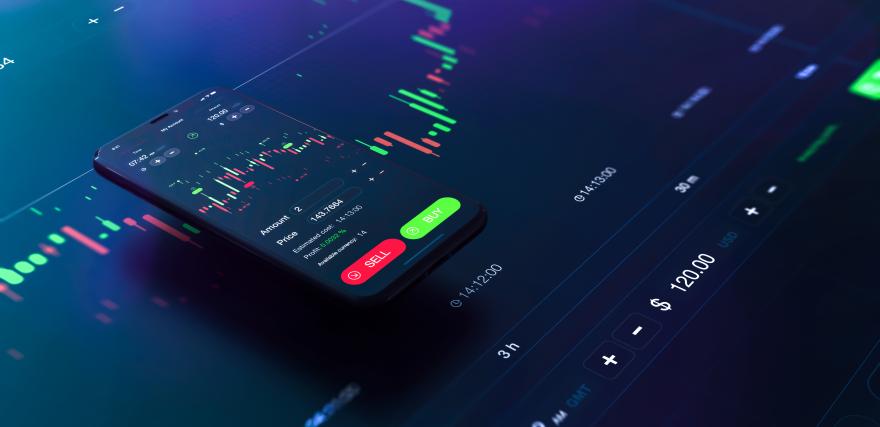Given the undeniable interest in trading in recent years, it is no wonder that there is an equally high demand for stock trading apps as many look for credible platforms to conduct their activities on.
According to reports, stock trading app industry is becoming quite lucrative and competitive, therefore, those who want to gain a significant market share need to have a competitive advantage, unique selling point and stand out from all the others in the industry. In the last year, particularly, people have had to stop consulting with brokers face-to-face to an extent, which is why trading apps became the next best solution as they continue to disrupt the finance industry.
Industry insiders believe that those who fail to keep up with global trends, especially as it relates to how much technology is infiltrating various aspects of our lives, will surely fall behind. As the current generation is said to be exploring various sources of income and investment options, they are front of the line when it comes to doing so online, thus the growing interest in trading apps.
Additionally, there are apps that offer commission-free trading and incentives for referrals, which is why they continue to exhibit high growth potential, yield high profits and are revolutionising software development.
Building your own
Estimated to be an industry worth hundreds of billions a year, building a stock trading app is becoming quite appealing, more so for those with the necessary app development knowledge and skills. Generally speaking, stock trading apps offer more than just the ability to buy and sell shares, which is their primary function.
As added value, some also give traders access to analysis tools, market news, real-time quotes and price alerts, historic trading data and statistics, as well as guidelines and information for novice traders. When establishing a stock trading tool, it makes sense to ensure that it is inclusive of some of the major indices, so making the FTSE 100 available on the app is advisable. Moreover, the Nasdaq 100 and S&P 500 are also key indices that remain of interest to stock traders. Below is a suggested guide and steps to follow for those looking to build their own stock trading app:
#1. Take the initial steps
As a starting point, it is advisable to decide on a project manager, competent IT architect and a collective of business analysts that you wish to work with. Ideally, they should have experience within the finance industry. Thereafter, plans for the MVP (minimum viable product) should commence. This will be through market research, understanding customer needs and what they deem valuable, and using the necessary tools to prioritise features accordingly.
#2. Develop a project plan, scope and outline
In order to effectively plan the app, it is vital to have a very clear understanding and outline of who you are serving, on which platforms or operating systems, as well as the features you will include, bearing in mind the outcome of the market research. It is also advised to be cognizant of the language offering, although English is generally the preferred language as it is widely spoken and understood across the globe. In addition, because the app will most likely be internationalised, the various app and technology guidelines that exist where the app will be populated must be considered.
#3. Prioritise security
Given the sensitivity of stock trading, the app needs to be airtight and traders must be confident in that their information will not be compromised. Therefore, securing the app should be of absolute importance. Multi-factor authentication, encryption, firewalls, etc. are just some of the ways to go about it.
#4. Establish plan of action and development approach
This step informs the subsequent steps, as this is where you will decide on fundamentals such as the cloud services you will use, design and develop APIs, establish guidelines for the apps and browser development and approach.
#5. Establish a competent and knowledgeable team
In addition to the initial contributors and team members, you must enlist the services of user interface (UI) designers, JavaScript developers, Android developers with additional capabilities, iOS developers, testers and development operations engineers.
#6. Choose PaaS and MBaaS platforms
Platform as a Service (PaaS) and Mobile Backend as a Service (MBaaS) platforms must be decided on, as they manage the cloud infrastructure and integrate databases and APIs. Therefore, the most appropriate ones must be identified and implemented for your stock trading app.
#7. Sign up for third-party APIs to incorporate non-core features
These are features that are other than trading-related ones; for example, push notifications for improved user engagement. While it is possible to continue trading and using the app without it, it is recommended for an enhanced user experience, therefore, they can be conducted through third-parties.
#8. Develop APIs for core features
These are the primary features that relate directly to the trading activities; yet again, API security is vital to reduce chances of hacking and fraudulent activity.
#9. Initial testing
The initial testing entails making sure that the app works with all devices and testing it against a wide range of devices. Should there be certain glitches along the way, they can then be attended to and improved on by the appropriate team member.
#10. UI design
The user interface needs to be simple and interactive; given that stock trading can be intimidating and complicated enough, users need to be comfortable with understanding the app’s capabilities, features and their trading activity.
#11. Develop, test and deploy web app
Now is the time to code and trial the web app on some of the credible and popular open-source runtime environments. This also entails integrating the APIs before testing and deploying it.
#12. Develop iOS and Android apps
Android and iOS devices use different coding languages, which is why your team needs to consist of people that are knowledgeable in either one or both. Thereafter, the app can be published and made available for download on the Google Play Store or Apple App Store.
-
Xiaomi Pad 7 Launching in Nepal Soon: Best iPad Alternative?HIGHLIGHTS Xiaomi Pad 7 price in Nepal could be Rs. 44,999 (8/128GB) and Rs. 49,999…
-
Honor X8c with 120Hz Display Launched in Nepal with an Early Bird OfferHIGHLIGHTS Honor X8c price in Nepal is Rs. 33,999 (8/512GB). It is powered by the…
-
HMD Crest Max 5G Launching Soon in Nepal – Now Even BetterHIGHLIGHTS HMD Crest Max 5G price in Nepal could be Rs. 21,999 (8/256GB). This phone…











